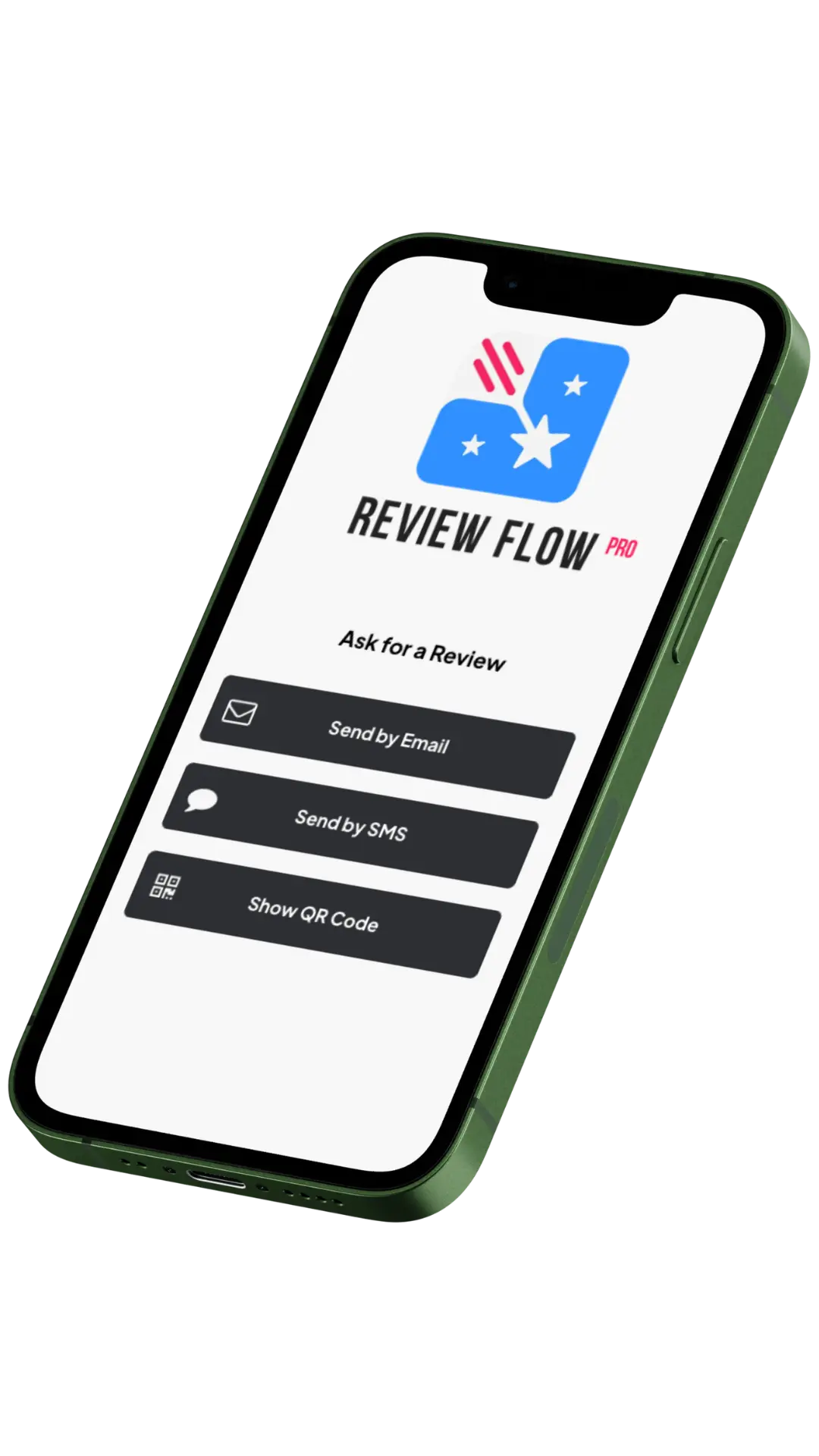Table of Contents
Introduction
How to market a small business is a crucial topic for small business owners aiming to thrive in today’s competitive market. Here’s a quick snapshot to get you started:
- Build a professional website.
- Leverage social media like Instagram and Facebook.
- Use email marketing for personalized outreach.
- Optimize your site for search engines.
- Engage in local promotions.
Marketing is essential for any small business to grow and sustain itself. When “if you build it, they still may not come,” getting the word out about what you offer is critical.
However, small businesses often face several challenges when it comes to marketing. Limited budgets, time constraints, and lack of expertise can make it tough to implement effective strategies. That’s where Major Impact comes in. We offer tailored solutions to help you navigate these hurdles, ensuring your business attracts more traffic, leads, and sales.
I’m Elliott Kosmicki, and I’ve spent over two decades helping small businesses market themselves successfully. From generating over 200,000 leads to running my own businesses, I’ve faced and tackled the very challenges you’re up against. Let’s dive into the nitty-gritty of how to market a small business.
What Is Small Business Marketing?
Small business marketing means using every available resource to share, promote, and build awareness around your brand. The goal is to increase your customer base and drive up sales. In practice, it can be tricky and requires a strategic approach.
Definition
Marketing your small business involves various activities designed to attract potential customers and keep existing ones engaged. These activities can include creating a website, social media profiles, email campaigns, print ads, and more.
Brand Awareness
Brand awareness is about making your business recognizable. The more people know your brand, the more likely they are to buy from you. For instance, a local bakery might use social media to post pictures of their delicious treats, making people more familiar with their offerings. Over time, this familiarity can turn into trust and loyalty.
Customer Base
Building a customer base means attracting new customers and keeping them coming back. This requires understanding who your target audience is and what they need. For example, if you run a gardening service, your target audience might be homeowners with gardens. Knowing this helps you tailor your marketing efforts to appeal to them specifically.
Sales Growth
The goal of marketing is to increase sales. Effective marketing strategies can lead to more website traffic, more leads, and more conversions. For instance, using Google AdWords to target specific geographic locations can bring in more local customers. A well-optimized website can turn those visitors into buyers.
Pro Tip: Use tools like Google Analytics to track your website traffic and see what’s working. You can get a free Impact Report about your website from Major Impact to understand how to improve your online presence.
Next, we’ll dive into why small business marketing is crucial for your success.
Why Is Small Business Marketing Important?
Brand Authority
Marketing is essential for establishing brand authority. When customers see your business frequently, they start to trust you. Creating valuable content and sharing it across different channels can position your brand as an expert in your industry. According to Forbes, capturing new interests and leads not only grows your sales but also helps establish a sense of authority around your brand.
Customer Engagement
Engaging with your customers is vital. When you interact with your audience, you build relationships and loyalty. Social media platforms like Instagram, Facebook, and Twitter allow you to connect with customers in real-time. This engagement helps you understand their needs and preferences, which can guide your future marketing strategies.
Lead Generation
Effective marketing generates leads. Whether it’s through email campaigns, social media ads, or SEO, attracting potential customers is crucial. As HubSpot points out, having a go-to-market strategy that aligns with the customer journey can help convert prospects into buyers. Tools like Google Analytics can help you track and optimize these efforts.
Sales Increase
The goal of marketing is to increase sales. By reaching new customers and maintaining relationships with existing ones, you boost your revenue. A well-rounded marketing strategy that includes SEO, content marketing, and email marketing can drive more traffic to your website, leading to higher sales. For instance, using Google AdWords to target specific geographic locations can bring in more local customers, as highlighted by Forbes.
Next, we’ll explore the different types of small business marketing you can use to achieve these goals.
Types of Small Business Marketing
Email Marketing
Email marketing is a powerful tool for small businesses due to its low cost and high reach. It allows you to send mass emails, yet personalize content to engage your audience effectively.
Collecting Emails: Start by building your email list through opt-in forms on your website, social media, and other channels. Offering incentives like discounts or free guides can help grow your list quickly.
Tools to Use:
– Mailchimp: Great for beginners with a free plan for up to 2,000 subscribers. It offers marketing options, landing pages, auto responses, and segmentation.
– Zoho Campaigns: Integrates well with CRM systems and offers a free plan for up to 2,000 contacts.
– MailerLite: Ideal for those interested in blogging and email marketing, with plans starting at $9 per month after the free version.
Social Media Marketing
Social media marketing helps you reach a global audience and engage with customers in real-time. Choose platforms that align with your target audience:
- Instagram: Ideal for visual content and younger demographics.
- TikTok: Great for short, engaging videos.
- Facebook: Versatile for all types of content and age groups.
- Twitter: Best for real-time updates and customer service.
- LinkedIn: Perfect for B2B marketing.
- Pinterest: Fantastic for visual content, especially in niches like home decor and fashion.
- YouTube: Excellent for video tutorials and product demos.
Engagement is Key: Post regularly, interact with your followers, and use paid ads to reach a broader audience.
Content Marketing
Content marketing focuses on creating valuable, relevant content to attract and retain a clearly defined audience. It helps establish your business as an authority in your field.
Types of Content to Create:
– Blogs: Share educational or entertaining articles.
– Videos: Create tutorials or product demos.
– Infographics: Visualize complex information.
Goal: The aim is to build strong customer relationships by providing helpful and interesting content. When done right, it captures every point of the buyer’s journey.
Search Engine Optimization (SEO) Marketing
SEO marketing improves your website’s visibility on search engines like Google. The higher you rank, the more traffic you get.
Key Techniques:
– Keyword Research: Tools like Ubersuggest and Semrush can help you find the best keywords.
– On-Page SEO: Optimize individual pages with relevant keywords.
– Backlinks: Get other reputable sites to link to your content.
Tools to Track Performance:
– Google Analytics: Monitor your website traffic.
– Google Search Console: Track how your site appears in search results.
Mobile Marketing
Mobile marketing targets users on their smartphones. With most people glued to their phones, it’s a great way to reach your audience.
Strategies:
– Location-Based Ads: Target users based on their geographic location.
– SMS Messages: Send promotional texts directly to customers.
– In-App Promotions: Advertise within mobile apps.
Make Sure Your Website is Mobile-Friendly: Ensure every part of your website, from browsing to purchasing, works smoothly on mobile devices.
Traditional Marketing
Traditional marketing methods are still effective, especially for reaching local audiences.
Types of Traditional Marketing:
– Magazine Ads: Target specific demographics.
– Billboards: High visibility in strategic locations.
– Direct Mail: Personalized letters or postcards.
– Radio Ads: Reach local listeners.
– TV Ads: Broad reach but can be expensive.
While traditional marketing can be costly, it offers a tangible way to reach potential customers who may not be online.
Next, we’ll discuss the tools you can use to streamline and automate your marketing efforts.
Small Business Marketing Tools
With so many marketing options available, figuring out which ones to use can feel overwhelming. Thankfully, there are tools designed to streamline and automate your marketing strategy.
Email Marketing Tools
Email marketing is a powerful way to reach your audience directly. Here are some tools to help:
Mailchimp: One of the most popular platforms. Mailchimp offers a free plan for businesses with fewer than 2,000 subscribers. It includes features like landing pages, auto responses, and the option to segment mailings. This makes it both budget- and user-friendly for small businesses.
Zoho Campaigns: Part of the Zoho suite, this tool offers a free plan for up to 2,000 contacts. The paid options start at just $3 per month. Zoho Campaigns allows for automation, has a drag-and-drop email editor, and integrates easily with CRM systems.
MailerLite: Ideal for businesses of all sizes, MailerLite offers features that are especially advantageous for those interested in blogging and email marketing. The free version caps at 1,000 subscribers, with paid plans starting at $9 per month. It’s a good fit for those looking to sell e-content like paid newsletter subscriptions.
Social Media Marketing Tools
Social media platforms are crucial for reaching a broad audience. Here are some of the best tools:
Facebook (Meta): Despite newer trends, Facebook remains a solid choice for brand awareness and lead generation, especially through paid ads. Many people still turn to Facebook to learn about businesses and check for updates or promotions.
Instagram: Originally a photo-sharing platform, Instagram now leads in social media marketing. Businesses can share stories, reels, live streams, and engage with their audience in real-time. It’s easy to link Instagram with Facebook for simultaneous posting.
TikTok: This video-sharing app is growing rapidly and is no longer just for a younger audience. Businesses can use hashtags strategically to share posts, promote content, and gain followers.
Twitter (X): Known for its quick, concise posts, Twitter is excellent for sharing brief, beneficial content. Tweets can include text, images, videos, and links, making it a versatile platform for customer engagement and brand awareness.
LinkedIn: Best for B2B marketing, LinkedIn offers a platform to connect with professionals, share industry updates, and generate leads. It’s a curated space to connect with potential employees and other businesses.
Pinterest: An image-based platform where businesses can pin images and videos on virtual boards. Pinterest is great for reaching an audience looking for ideas and solutions.
YouTube: The second-largest search engine after Google, YouTube allows businesses to create and share video content. Whether demonstrating a product or giving a tour, YouTube can reach a nearly unlimited audience.
SEO Marketing Tools
SEO marketing is key to making your business visible online. Here are some essential tools:
Google Analytics: A free tool that provides insights into your customers. It helps you understand how customers find and engage with your site, allowing you to adjust your marketing strategy for better ROI.
Google Search Console: Also free, this tool helps you monitor your website’s performance in search engine results. It shows how often your site appears in searches, which queries show your site, and how often searchers click through.
Ubersuggest: Specializes in generating new keyword ideas. It offers a free Chrome extension that allows small businesses to search Google, YouTube, and Amazon to see keyword data. Ubersuggest also provides SEO insights and graphs showing monthly search volumes.
Semrush: This SEO software helps identify trends with its Keyword Magic Tool, Google Ad optimization, and competitor analysis. Though the monthly subscriptions can be costly, the free plan offers valuable options, especially for beginners in SEO.
Next, we’ll discuss how to market a small business by defining goals, examining current efforts, knowing your target customer, and choosing effective strategies.
How to Market a Small Business
Define Your Goals
Before diving into marketing tactics, define your goals. What do you want to achieve? Be specific. For example, “Increase website traffic by 20% in six months” is a clear goal.
Use numbers: Track metrics like website visitors, leads, and sales. This helps measure success.
Short-term and long-term goals: Set both. Short-term goals might include gaining 100 new social media followers in a month. Long-term goals could be doubling your customer base in a year.
Examine Your Current Efforts
Take a close look at what you’re doing now. Which strategies are working? Which aren’t?
List your current strategies: Include everything from social media posts to email newsletters.
Measure success: Use tools like Google Analytics to see what’s driving traffic and conversions.
ROI analysis: Compare the cost of each strategy to its results. Focus on high-ROI activities.
Know Your Target Customer
Understanding your audience is crucial. Who are they? What do they want?
Create a customer profile: Include demographics like age, gender, and location.
Shopping preferences: Find out how they shop. Do they prefer online or in-store? Do they use mobile devices?
Customer feedback: Use surveys, emails, and social media to gather insights.
Choose Your Strategies
Now, choose the best strategies for your goals and audience.
Start with proven tactics: If social media ads have worked well, keep using them.
Experiment: Try new strategies for six months. For example, if you haven’t used Google AdWords, give it a shot.
Adjust as needed: Monitor results and tweak your approach. Marketing is not one-size-fits-all.
Next, we’ll dive into the 10 Best Strategies for Marketing Your Small Business, including building a professional website, leveraging social media marketing, and running giveaways.
10 Best Strategies for Marketing Your Small Business
Build a Professional Website
A professional website is your digital storefront. It’s where potential customers learn about your business, products, and services. Make sure your website is:
- Well-designed: Use a clean layout and easy navigation.
- Mobile-friendly: Many users browse on their phones.
- SEO optimized: Use keywords to rank higher on search engines.
Your website should also include contact information and, if applicable, an e-commerce section for online sales.
Leverage Social Media Marketing
Social media platforms like Facebook, Instagram, and TikTok are essential for reaching a broader audience. Here’s how to leverage them:
- Select the right platforms: Focus on where your audience spends most of their time.
- Engage with users: Respond to comments and messages.
- Use paid ads: Boost posts or run targeted ad campaigns to increase reach.
Run a Giveaway
Giveaways can create buzz and attract new customers. Consider these tips:
- Contest ideas: Offer a free product, service, or a gift card.
- Engagement: Ask participants to like, share, or comment to enter.
- Lead generation: Collect email addresses for future marketing.
Lean into Content Marketing
Content marketing helps build relationships with your audience. Focus on:
- Blogging: Write articles that address your customers’ pain points.
- Educational content: Create how-to guides, videos, or infographics.
- Customer engagement: Encourage comments and shares.
Optimize Your Website for SEO
Search Engine Optimization (SEO) improves your website’s visibility. Key steps include:
- Keyword research: Find relevant keywords your target audience searches for.
- On-page SEO: Optimize titles, headers, and meta descriptions.
- Backlinks: Get other reputable sites to link to your content.
Run a User-Driven Marketing Campaign
User-driven campaigns leverage your customers’ voices. Implement:
- Customer reviews: Encourage satisfied customers to leave reviews.
- Testimonials: Showcase positive feedback on your website.
- User-generated content: Share customer photos or videos using your products.
Dive into Affiliate Marketing
Affiliate marketing involves partnering with others to promote your products. Benefits include:
- Partnerships: Collaborate with influencers or other businesses.
- Commission-based sales: Pay affiliates a percentage of sales they generate.
- Brand awareness: Expand your reach through your affiliates’ audiences.
Use Google AdWords
Google AdWords allows you to target specific keywords in your ads. Tips for using it effectively:
- Targeted ads: Focus on keywords relevant to your business.
- Budget control: Set a budget that works for you.
- Geographic targeting: Narrow down your audience by location.
Email Customers and Potential Customers
Email marketing remains one of the most effective strategies. Focus on:
- Building an email list: Collect emails through your website or in-store.
- Personalized content: Send tailored messages based on customer preferences.
- Promotions: Offer special deals or updates.
Promote Your Business Locally
Local marketing helps you connect with your community. Strategies include:
- Networking: Join local business associations or chambers of commerce.
- Community involvement: Sponsor local events or participate in community activities.
- Local SEO: Optimize your website for local search terms.
For more tips on improving your traffic, leads, and sales, get a free Impact Report about your website from Major Impact.
Frequently Asked Questions about How to Market a Small Business
What is the best marketing for small businesses?
The best marketing for small businesses is the one that reaches the most customers in your target audience. This varies based on what you sell, how you sell it, and who you are trying to reach.
Key factors to consider:
- Target Audience: Understand who your customers are. What do they need? Where do they spend their time online?
- Product/Service: Tailor your marketing to highlight the unique benefits of your offerings.
- Buyer’s Journey: Map out the steps your customers take from discovering your product to making a purchase.
Example: If you run a bakery, social media platforms like Instagram and Facebook can help you showcase your delicious treats with eye-catching photos.
What are the top marketing mistakes small businesses make?
Small businesses often make mistakes that can waste time and money. Here are some common pitfalls:
- Ineffective Methods: Using marketing tactics that don’t work for your business. Always monitor and adjust your strategies.
- Ignoring Analytics: Not paying attention to data can lead to poor decisions. Use tools like Google Analytics to track your performance.
- Lack of Adjustments: Sticking with failing strategies. Be flexible and willing to change tactics based on what the data tells you.
Quote: “By paying attention to your analytics, you will be able to choose the best marketing options and adjust them as needed in the future.” Forbes
What is the cheapest way to promote your business?
Promoting your business on a budget is possible with several low-cost strategies:
- Social Media: Platforms like Facebook, Instagram, and Twitter are free to use. Engage with your audience and post regularly.
- Email Marketing: Collect email addresses and send newsletters or promotions. Tools like Mailchimp offer free plans.
- SEO Tools: Improve your website’s search engine ranking with free tools like Google Analytics and Ubersuggest.
Pro Tip: Combine these strategies for maximum impact. For example, use social media to drive traffic to your website, where visitors can sign up for your email list.
For more tips on improving your traffic, leads, and sales, get a free Impact Report about your website from Major Impact.
Conclusion
Marketing your small business effectively requires consistent effort and a well-thought-out plan. Consistent branding is essential. Your brand should be recognizable and consistent across all platforms, from your website to social media to printed materials.
At Major Impact, we understand the unique challenges small businesses face. That’s why we offer tailored marketing solutions to help you grow. Whether it’s through email marketing, social media, or SEO, we have the tools and expertise to boost your brand’s visibility and reach.
Creating a marketing plan is not a one-time task. It’s a dynamic blueprint that needs regular updates and adjustments. Set clear, measurable goals, and continuously evaluate your strategies to see what works best.
The right marketing strategy can turn visitors into loyal customers, driving your business growth. For personalized advice and to see how your website is performing, get a free Impact Report from Major Impact.
By staying consistent with your branding and using a strategic marketing plan, you can ensure your small business not only survives but thrives in today’s competitive market. Visit our services page to learn how we can help you achieve your marketing goals.








